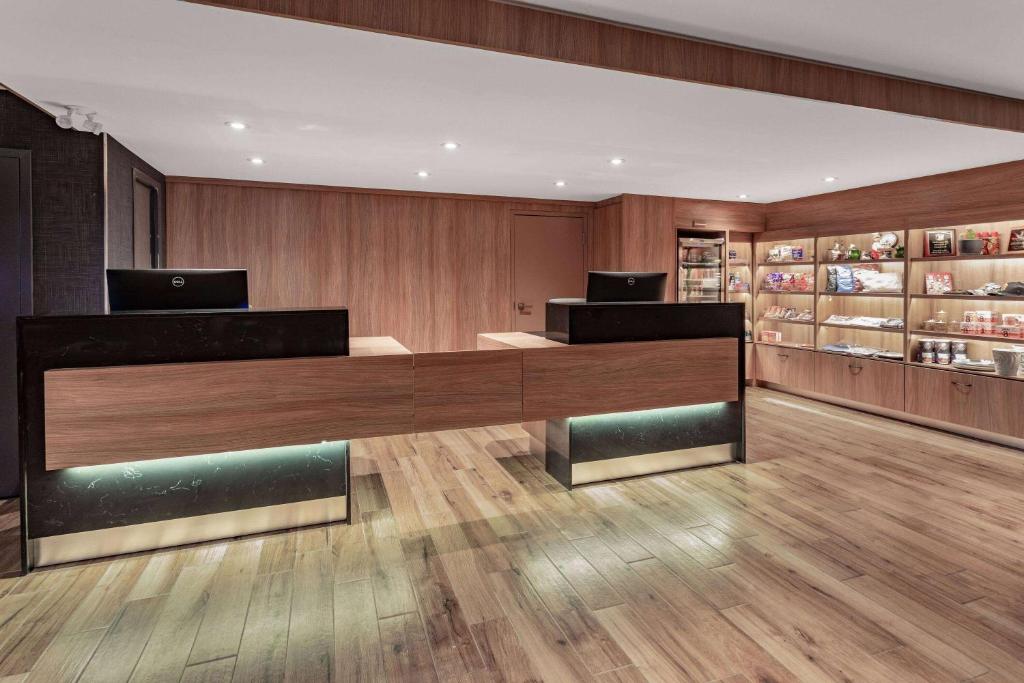The hotel lobby serves as the face of the establishment, offering guests their first impression and setting the tone for their stay. It is more than just a transitional space; it is a canvas for a hotel’s brand identity and a significant touchpoint in shaping guest experiences.
Central to this experience is hotel lobby furniture, a key component that blends functionality with aesthetic appeal. This blog explores hotel lobby furniture's pivotal role in defining a hotel's branding and style.
A First Impression That Speaks Volumes
The lobby is the first area that greets guests, making it an essential aspect of a hotel's identity. From the moment guests step inside, the design, layout, and furnishings create a visual and emotional impact.
Whether a hotel aims to exude modern sophistication, rustic charm, or timeless elegance, the furniture in the lobby serves as a primary communicator of this vision.
Sleek leather sofas with contemporary coffee tables project a modern aesthetic, while classic armchairs and ornate side tables reflect traditional luxury.
By carefully selecting lobby furniture, hotels can craft a strong and consistent brand narrative that resonates with their target audience.
Balancing Style and Comfort
While aesthetics are critical, comfort remains a cornerstone of effective lobby design. Guests often use the lobby to relax, conduct meetings, or wait for transportation, making comfortable seating essential.
Furnishings that seamlessly merge style with ergonomics leave a lasting impression on guests. For instance, well-cushioned chairs with durable yet luxurious upholstery provide visual appeal and relaxation.
When comfort and style are perfectly balanced, hotel lobby furniture becomes indispensable in creating a welcoming and memorable atmosphere.

Enhancing the Aesthetic Appeal
Every piece of hotel lobby furniture contributes to the overall ambiance of the space. Strategic choices in design and layout can enhance the aesthetic appeal, ensuring the lobby feels cohesive and inviting.
Here are some considerations for achieving an exceptional design:
- Feature Pieces: Incorporating unique furniture items, such as a striking sofa or an artistically designed bench, can serve as focal points that capture guests' attention.
- Functional Layouts: The furniture arrangement should facilitate both functionality and flow, accommodating individual seating and areas for group interactions.
- Thematic Coherence: Furniture choices should align with the hotel's architectural style and interior design elements, ensuring a harmonious look.
Through meticulous design planning, the lobby transforms into an elegant and functional space that reflects the hotel's identity.
Creating Memorable Guest Experiences
In the era of social media, hotel lobbies have the potential to be more than just a functional area—they can become iconic backdrops for guests’ photos. Stylish and distinctivelobby furniture encourages guests to capture and share their experiences, amplifying the hotel’s visibility online.
From sophisticated seating arrangements to visually captivating décor, the furniture plays a key role in creating an Instagram-worthy setting. This elevates the guest experience and reinforces the hotel’s brand image on digital platforms.
Durability and Longevity
Hotel lobbies experience high foot traffic, making durability a critical consideration for furniture selection. High-quality materials, such as stain-resistant fabrics, solid wood, and robust metal frames, ensure that the furniture retains its aesthetic appeal and functionality over time.
Investing in durable lobby furniture minimizes maintenance costs while preserving the overall ambiance of the space. This balance of quality and resilience ensures that the lobby consistently meets the expectations of discerning guests.
Sustainability as a Branding Element
Sustainability has become a significant factor in the hospitality industry, with more travelers seeking environmentally conscious accommodations. Choosing eco-friendly hotel lobby furniture, such as items made from reclaimed wood or recycled materials, allows hotels to align with this growing demand.
By prioritizing sustainability, hotels enhance their brand image and appeal to a broader audience that values responsible practices. This strategic alignment with environmental awareness can set a hotel apart in a competitive market.
Conclusion: Elevating Brand Identity Through Furniture
The importance of hotel lobby furniture in defining a hotel’s brand and style cannot be overstated. From creating a strong first impression to offering comfort and aesthetic appeal, the furniture in the lobby plays a multifaceted role in shaping guest experiences and reinforcing brand identity.
A well-designed lobby is an investment that pays dividends in guest satisfaction, online visibility, and brand loyalty. By carefully curating the furniture, hotels can ensure that their lobbies serve as functional spaces and powerful branding tools, leaving a lasting impression on guests who walk through their doors.